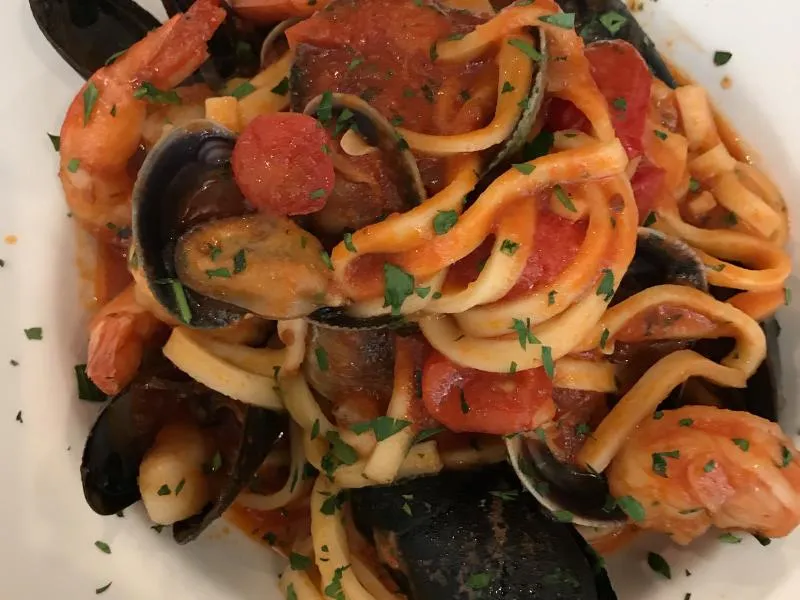Linguine ai Frutti di Mare
Fresh linguine pasta tossed with an array of seafood in a light, garlicky wine and tomato sauce.
👉 View Authentic Recipe 👈
About This Dish
Linguine ai Frutti di Mare, literally “linguine with fruits of the sea,” is a celebrated coastal Italian pasta dish that showcases the Mediterranean’s bounty of seafood. Originating from the seaside towns of Campania, particularly around Naples and the Amalfi Coast, this dish represents the perfect marriage between pasta and the fresh catch of local fishermen.
The traditional preparation combines linguine pasta with an assortment of seafood typically including clams, mussels, shrimp, and calamari, all gently cooked in a light sauce of olive oil, white wine, garlic, and sometimes a touch of tomato. The key to its authentic flavor lies in using the freshest seafood possible and allowing the natural briny flavors to infuse the pasta.
In Italian coastal communities, this dish is often prepared for celebrations or Sunday family gatherings, especially during summer months when seafood is at its peak freshness. While variations exist throughout Italy’s coastline, the Campanian version is known for its balance of flavors and minimal use of herbs, letting the seafood shine as the star ingredient.
🧑🍳 Analyzed by CucinaBot
Why This Dish Works
Linguine ai Frutti di Mare succeeds through its perfect balance of complementary flavors. The natural salinity of the seafood creates an umami base that’s enhanced by the acidity of white wine and tomatoes. The starch released from the pasta during cooking helps create a silky emulsion with the olive oil, while the different textures of the various seafood components provide contrast with each bite. The flat, thin shape of linguine provides ideal surface area for capturing the light sauce.
Key Success Factors
- Seafood Freshness: The quality and freshness of seafood is paramount - it should smell briny and clean, never fishy
- Cooking Timing: Each type of seafood must be added in sequence according to cooking time to prevent overcooking
- Pasta Doneness: Linguine should be cooked al dente and finished in the sauce to absorb flavors
- Sauce Consistency: The final sauce should coat the pasta lightly, not drown it - reduced just enough to concentrate flavors
Common Pitfalls
Many non-authentic recipes overwhelm the delicate seafood flavors with too much tomato sauce or heavy cream, neither of which belong in the traditional preparation. Another common mistake is overcooking the seafood, resulting in rubbery texture rather than tender morsels. Using pre-cooked or frozen seafood can significantly compromise the dish’s fresh flavor profile and proper texture.
How to Judge Authenticity
When reviewing recipes, look for these markers of authenticity:
- Uses a variety of fresh seafood (minimum 3-4 types)
- Contains minimal ingredients beyond seafood, garlic, wine, and possibly a touch of tomato
- Includes the cooking liquid from the shellfish as part of the sauce
- Specifies cooking the pasta short of al dente to finish in the sauce
- Does not include cream, excessive herbs, or heavy spices that would mask seafood flavors